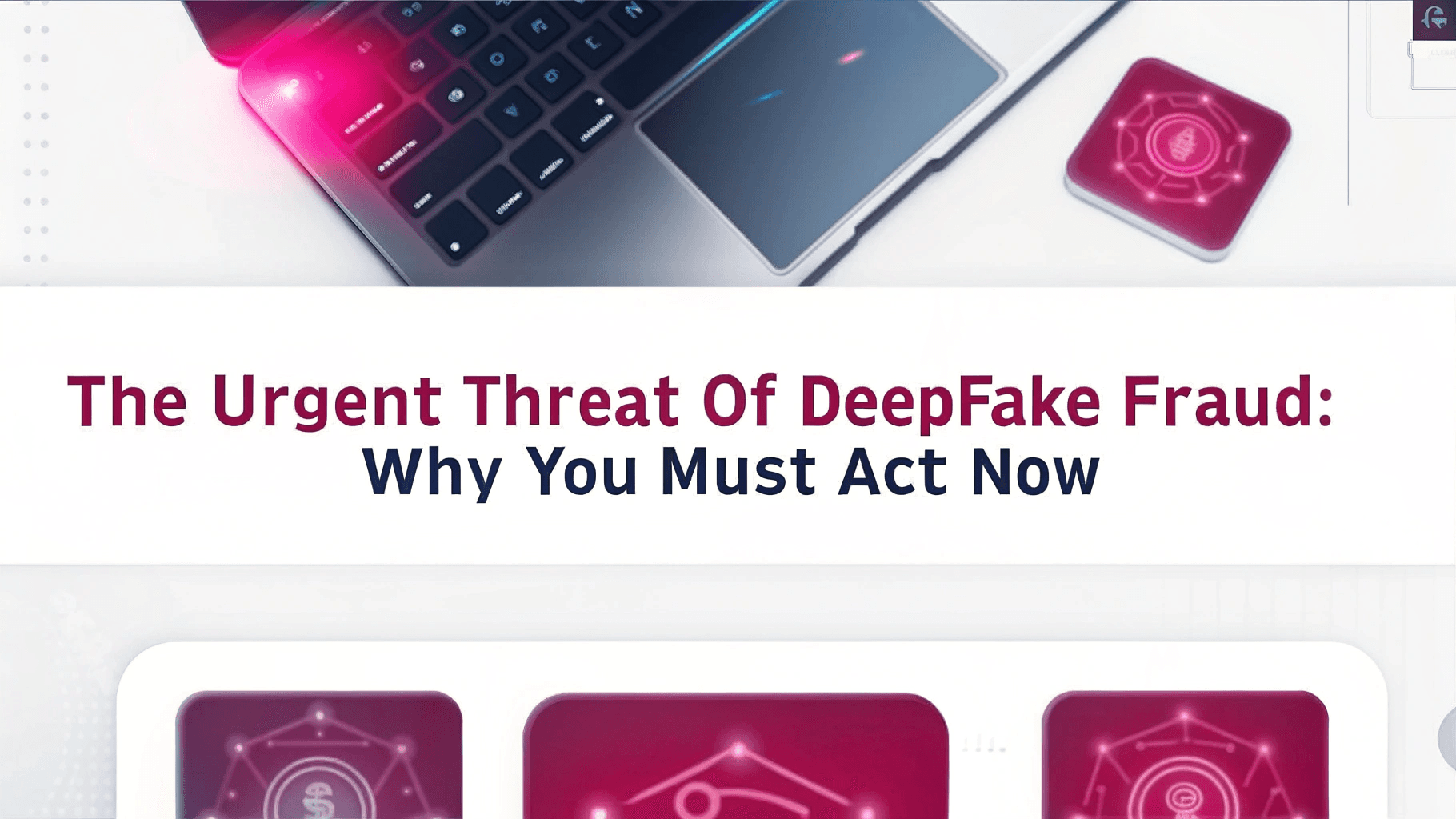The sophistication of artificial intelligence has given rise to a significant business risk: AI-generated deepfakes. These synthetic audio and video forgeries have become so realistic they can deceive even discerning executives, creating direct threats to your organization's financial stability, regulatory standing, and brand reputation. What was once a technical curiosity is now a strategic imperative that requires board-level attention.
This briefing outlines the financial and operational impact of deepfake threats, clarifies new regulatory obligations, and presents a strategic framework for mitigating these advanced risks.
Quantifying the Financial Impact of Deepfake Fraud
Deepfake technology enables attackers to execute highly convincing impersonations of key personnel, bypassing traditional security controls to authorize fraudulent transactions and access sensitive data. The financial ramifications are substantial and immediate.
High-Value Financial Fraud:
A well-documented incident involved a finance employee transferring $25 million to criminals after being deceived by a deepfake video conference that convincingly replicated the company's CFO and other executives. This case demonstrates the potential for catastrophic, single-event losses.
Systemic Operational Risk:
The 2024 ransomware attack on Ascension, a major healthcare provider, resulted in an estimated
$1.5 billion loss. While not a direct deepfake attack, it highlights the financial devastation that can follow from sophisticated cyber intrusions, a category where deepfakes are increasingly prevalent.
Compromised Talent Acquisition:
Gartner projects that by 2028, one in four job candidate profiles will be synthetic. This trend poses a direct threat to organizational security by facilitating the placement of malicious insiders who can exfiltrate intellectual property or enable further attacks.
State-Sponsored Corporate Espionage:
The infiltration of 320 companies by North Korean IT workers in the past year alone underscores the scale of advanced deception tactics being deployed against corporations. These operations often aim to steal funds or proprietary information, posing a direct threat to competitive advantage and financial health.
The Regulatory Imperative: Aligning with New AI Mandates
Global regulatory bodies are moving swiftly to address the risks associated with AI, establishing compliance frameworks that carry significant financial penalties for non-adherence.
The EU AI Act and Global Governance Trends
The European Union's AI Act is a landmark regulation that classifies AI systems based on risk. Deepfakes fall under specific transparency mandates, requiring organizations to disclose when media is artificially generated. This act sets a global precedent, signaling a broader regulatory expectation for robust AI governance and risk management.
For executives, this means that proactive compliance is essential. Regulators and auditors will expect to see evidence of due diligence, including:
Quantified Risk Assessments: Formal evaluation of potential AI-driven threats.
Technical and Organizational Controls: Implementation of appropriate security measures.
Tailored Incident Response Plans: Protocols designed specifically for AI-generated incidents.
Failure to meet these standards not only exposes the organization to direct attack but also creates significant compliance and financial risk.
Actionable Recommendations for a Resilient Defense
A robust defense strategy against deepfake threats requires a holistic approach that integrates advanced technology, stringent processes, and comprehensive training.
Adopt Advanced Detection Technologies:
Deploy security solutions capable of detecting threats across diverse communication channels, including email, phone, and video. The most effective tools apply shared awareness by aggregating and analyzing multiple metadata elements—such as sender identity, device details, network patterns, and file properties—to identify suspicious activity that may be missed when monitoring a single vector.
Implement AI-powered systems that evaluate media for subtle artifacts, behavioral inconsistencies, and metadata anomalies, enhancing detection accuracy.
Integrate real-time detection tools into communication platforms and security workflows to provide automated, cross-channel defense against synthetic media and deepfake threats.
Implement Robust Verification Protocols:
Mandate multi-channel, out-of-band verification for all high-stakes requests, such as fund transfers or changes to sensitive system credentials.
Establish a system of secure challenge questions or passphrases for identity verification during verbal or video interactions.
Foster a Culture of Security Through Employee Training:
Conduct regular, targeted training programs to educate employees on the mechanics and indicators of deepfake attacks.
Utilize social engineering simulations with deepfake elements (e.g., AI-generated voice notes) to test and reinforce employee vigilance.
Strengthen Data Protection and Governance:
Enforce data minimization policies to limit the public availability of audio, video, and image data of key personnel.
Update incident response plans with specific protocols for containing, investigating, and reporting deepfake-related security events.
Conclusion: From Strategic Awareness to Decisive Action
The threat from deepfake technology represents a quantifiable risk to your organization's financial health, regulatory compliance, and brand reputation. A "wait-and-see" approach is no longer a viable option.
By making a strategic investment in cross-channel threat detection, reinforcing business processes with robust verification protocols, and cultivating a security-aware culture, you can build a resilient defense. This proactive framework will safeguard corporate assets, ensure regulatory alignment, and protect the integrity of your executive leadership. The time for decisive action is now.

